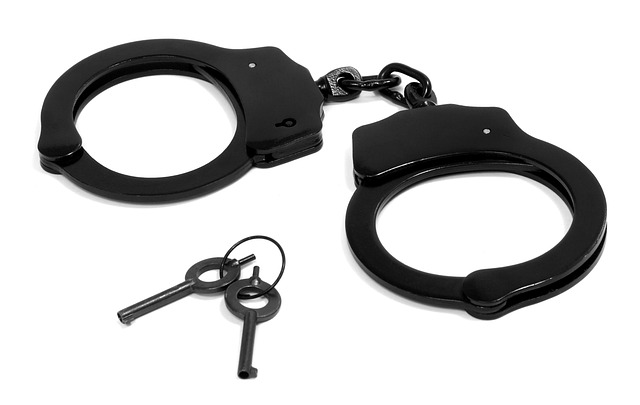The article explores the profound impact of DUI charges on individuals' employment opportunities, highlighting how a single conviction can severely hinder career progression in safety-critical industries. Breath alcohol testing (BAL) is a key tool for determining blood alcohol content, but it's not without challenges, including device calibration and human error. These factors can lead to false readings, affecting legal outcomes and employment prospects. To ensure accurate and fair BAL testing, critical strategies focus on standardizing procedures, maintaining equipment, training personnel, and controlling external factors. These measures are crucial for mitigating the adverse effects of DUI's on employment and ensuring reliable assessments.
“In today’s world, balancing employment opportunities and DUI (Driving Under the Influence) convictions is a complex issue. Accurate Breath Alcohol (BAL) testing plays a pivotal role in this dynamic, impacting job prospects significantly. This article delves into the intricacies of BAL testing, exploring its basics and importance in employing individuals with past DUI offenses. We examine challenges that hinder accuracy and present strategies to enhance testing methods, ensuring fairness while addressing the crucial link between DUI’s and employment prospects.”
- Understanding BAL Testing: The Basics and Its Significance
- DUI's and Employment: A Complex Relationship
- Ensuring Accurate Results: Challenges in BAL Testing
- Strategies for Reliable Testing: Enhancing Accuracy and Fairness
Understanding BAL Testing: The Basics and Its Significance

BAL testing, or Breath Alcohol Testing, is a crucial procedure used to determine an individual’s blood alcohol content (BAC) accurately. It plays a significant role in various contexts, especially legal and medical. This non-invasive test measures the amount of ethanol in one’s breath, providing a direct indicator of recent alcohol consumption. The results can have far-reaching implications, particularly in cases involving DUI (Driving Under the Influence). Accurate BAL testing ensures that justice is served and helps deter individuals from endangering others on the road.
For those facing DUI charges, the outcome of BAL testing can significantly impact their employment prospects. In many professions, especially those requiring public safety or operation of heavy machinery, a single positive test result can lead to immediate termination. Thus, accurate testing is not just about legal consequences but also ensuring career stability and avoiding potential long-term effects on one’s livelihood.
DUI's and Employment: A Complex Relationship

DUI’s (Drunk Driving Impairment) and employment opportunities share a complex, often intertwined relationship. While a clean driving record is increasingly essential for various job roles, especially those involving transportation or public safety, the consequences of a DUI can significantly impact an individual’s career prospects. A single incident can lead to loss of licensure, affecting one’s ability to secure or maintain certain positions.
Employment employers often conduct background checks as part of their hiring process, and a DUI conviction is not uncommon among these issues. This can result in rejection during the initial screening stage or even termination post-hire, depending on the severity of the offense and the industry standards. Consequently, individuals with DUI’s may face challenges in finding employment, particularly in fields requiring driving or access to sensitive areas, emphasizing the far-reaching impact of such legal issues on one’s professional life.
Ensuring Accurate Results: Challenges in BAL Testing

Ensuring accurate results is paramount in BAL (Breath Alcohol Testing) testing, as the implications can be significant, especially when it comes to DUI (Driving Under the Influence) cases. However, achieving precise and reliable outcomes isn’t without its challenges. One major hurdle is maintaining consistent device calibration; any deviation can lead to incorrect readings. Environmental factors, such as temperature changes or improper storage conditions, can also affect test accuracy.
Additionally, human error during the testing process plays a critical role. Inaccurate administration of the test or improper use of equipment can result in false positives or negatives, impacting legal cases and employment opportunities. For instance, a DUI conviction based on flawed BAL results could have severe repercussions for an individual’s career, especially in fields where drug and alcohol impairment is strictly prohibited, like transportation or healthcare.
Strategies for Reliable Testing: Enhancing Accuracy and Fairness

To ensure BAL testing accuracy, several strategies can be employed to enhance fairness and reliability. First, standardized procedures and well-maintained equipment are paramount. All tests should adhere to consistent protocols, and regular calibration of devices ensures accurate readings. Trained personnel who follow these procedures meticulously contribute to minimizing human error.
Additionally, addressing potential biases is crucial. For instance, ensuring a diverse range of test administrators can help mitigate unconscious prejudices that may influence results. Moreover, implementing measures to protect against external factors, such as temperature variations or sample contamination, further enhances the integrity of BAL testing. These strategies are vital in mitigating the significant impact of DUI’s on employment prospects, ensuring fair and accurate assessments.
In conclusion, while BAL testing plays a pivotal role in understanding DUI’s impact on employment, ensuring accurate results is paramount. Navigating the complexities of this process requires addressing challenges and adopting strategies that enhance accuracy and fairness. By doing so, we can ensure that BAL testing serves as a reliable tool for making informed decisions regarding employment opportunities, upholding legal standards, and promoting justice.






